Exasperated Review of NACTO's Bikeway Design Guide
Subhead: it's very good and not why you think it is.
Use Code “EXASPERATED” at checkout to save 25%.
What It Is
I’ve been sitting on my Very Nice™️cloth-bound copy of NACTO’s Urban Bikeway Design Guide (published by Island Press, obviously) for a few months. It, like many/most of NACTO’s publications, is dually a fantastic reference book and a handsome coffee table accoutrement. It’s flippable and rigorous, mesmerizing and detailed, and mostly, it serves as the authority for public realm design standards when bicycles are included in development or redevelopment. Cities and other jurisdictions, NACTO asserts, should default to these ideas and design blueprints when in doubt and promote them in context when the opportunity arises.
I agree.
The diversity of input and situational awareness is not in question—nor is it in any of NACTO’s other guides, reports, partnerships, or technical assistance programs. The book is the top version of a book you or your organization would buy to help with anything concerning bikeway design and its component parts (urbanism + people).
What I Like
20% of the book is dedicated to capacity building and context-sensitive placemaking as a verb and a noun.
The book’s chapters are organized intuitively, and it is easy to find exactingly detailed information in print, flipping through, or searching through the table of contents.
Principles are explored in great depth and then applied contextually—the reader can take away heuristics and examples of how these ideas can be further explored with the particular community.
What It Isn’t
NACTO guides are not solutions manuals as much as they are satnavs for a better world. These books are not turnkey and should never be Ctrl+V’d onto city streets. They are also not nor should they be the only guides or set of contextual lessons applied to a local street, insofar as the city has resources to think practically and conceptually about what a future for safe and effective biking looks like. It is likely that cities that use NACTO guides to help guide design solutions will be more successful in their endeavors, but it is remiss to attribute these solutions wholly to the guide itself.
What I Don’t Like
There’s very little I don’t like here, and my criticisms are mostly related to the user experience of the book. These criticisms are also not unique to this book, NACTO’s forward-facing information, and generally, planning documents: they’re not written for ease of use or the user experience. In turn, this schism in media outlets/reports to human persons reading or interacting with said reports creates confusion and a missed opportunity. The visual design of information matters almost as much as the content itself, and never let anyone tell you otherwise: they’re naive or hiding something. That said, the text layout of this document is amateurish, and it makes me churlish.
Some Examples of Great Design That You Should Use
Thanks again to Island Press for the digital and physical copies of the guide for review and for use in my work, generally, as a person who cares about the design of streets and their many uses. I wanted to highlight some of the really great parts as a preview, but you should certainly check out NACTO’s site and Island Press to get a copy (digital and/or physical) for yourself. (Use code EXASPERATED to get 25% your whole order at Island Press!)
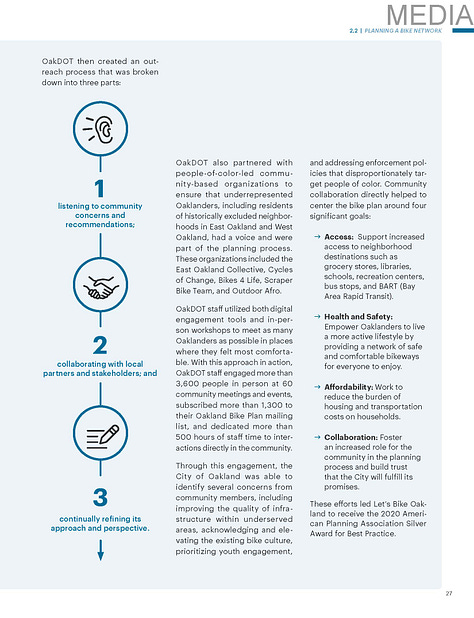

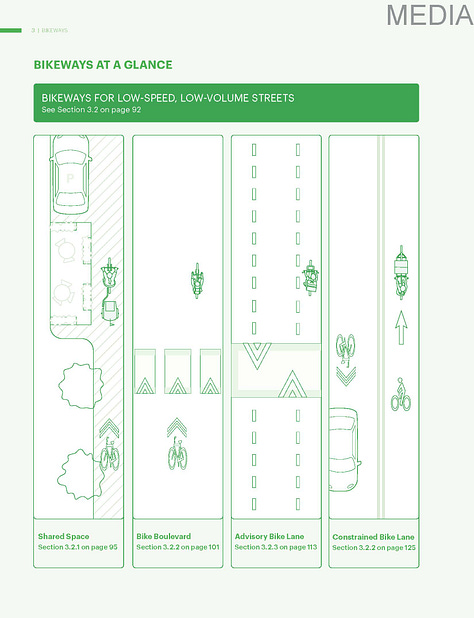
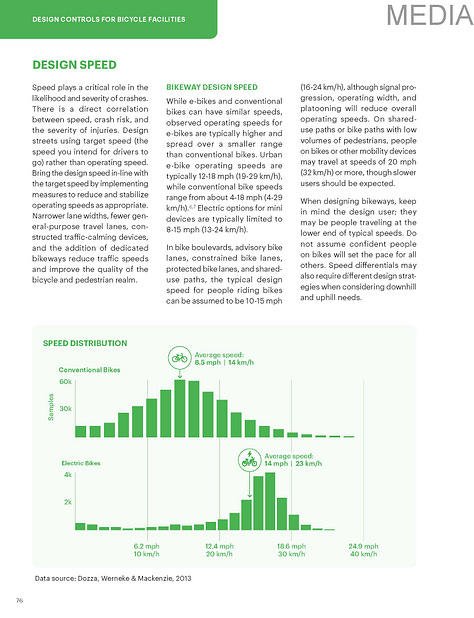
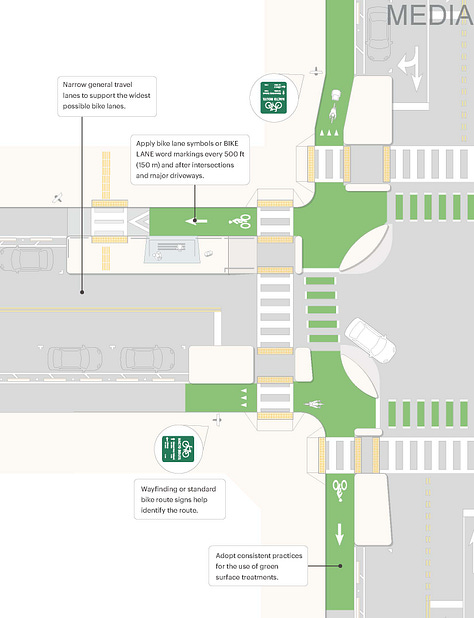
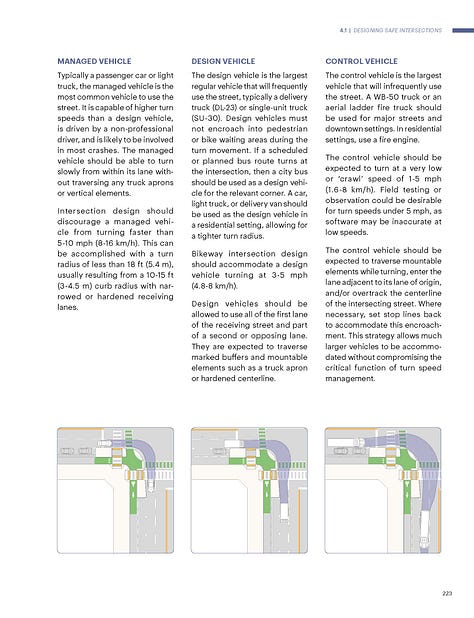

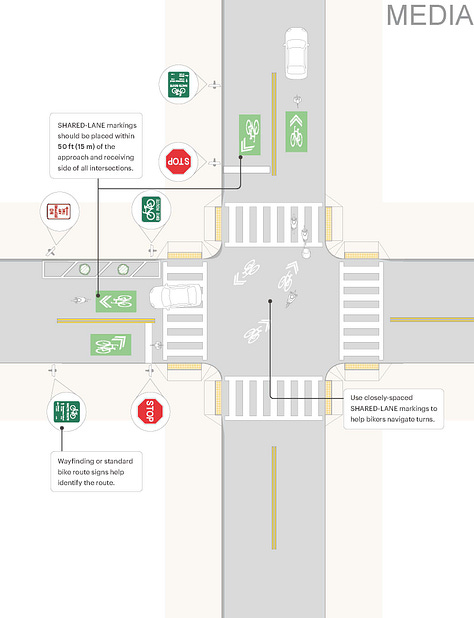

The graphics are clean and clear. The flow charts help with decision-making. The charts are meaningful and informative. This resource is excellent—and a welcome upgrade over the 2nd Edition. Planners should incorporate its teachings and lessons into their strategies accordingly.



